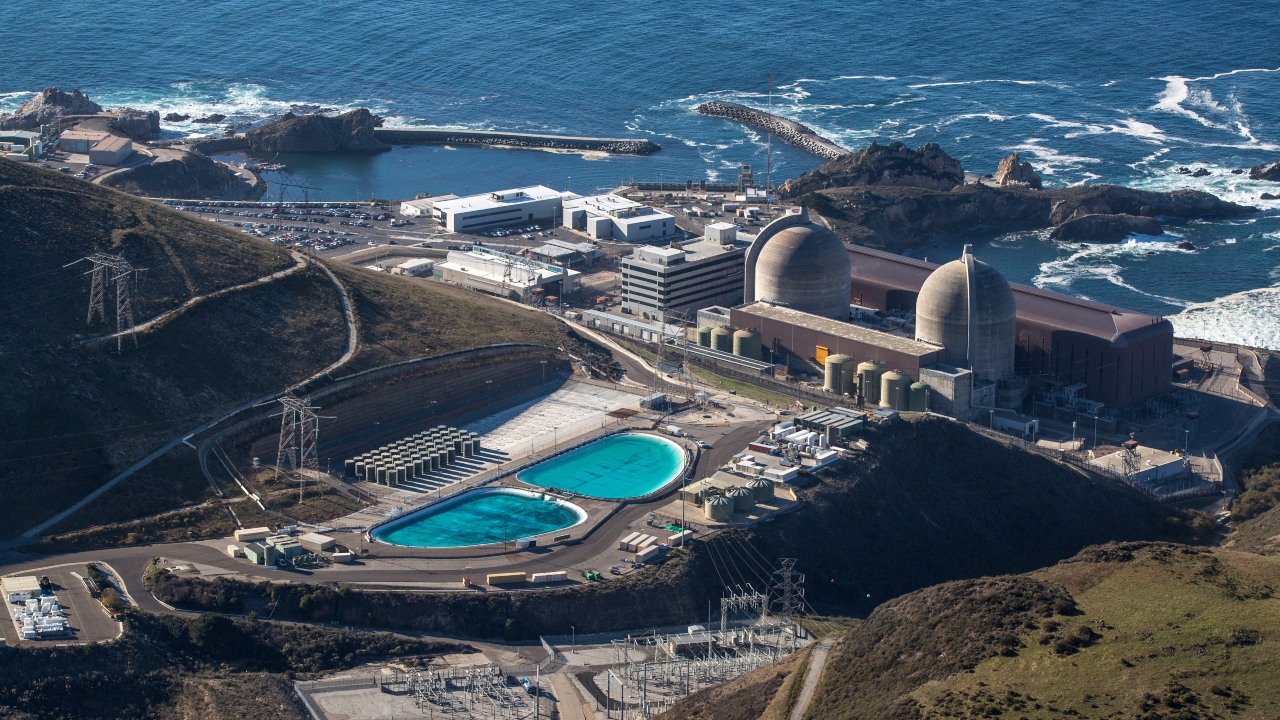California lawmakers extend life of nuclear plant as state faces power emergency
A heat wave has forced energy conservation to prevent blackouts
California prepares for emergency blackouts with extreme heat wave approaching
Economist Steve Moore and GOP strategist Ford O'Connell discuss California pushing green energy policies despite facing rolling blackouts on 'The Evening Edit.'
California lawmakers voted to extend the life of the state's sole nuclear power plant by five years.
According to Pacific Gas and Electric Company (PG&E), Diablo Canyon power plant provides low-carbon electricity for more than 3 million people and the plant was licensed to operate into 2025.
The lawmakers reversed a 2016 decision to retire the plant that year and set a goal of generating 90% of its electricity from clean sources by 2035.
A government loan totaling $1.4 billion – mostly or all paid for by the federal government – was approved to extend the plant's operation to 2030.
Aerial view of the Diablo Canyon, the only operational nuclear plant left in California, due to be shutdown in 2024 despite safely producing nearly 15% of the state's green electrical energy power, is viewed in these aerial photos taken on December 1 (Photo by George Rose/Getty Images / Getty Images)
In addition, several other measures related to climate change were OKed.
A ban on oil and gas drilling within 3,200 feet of structures was passed as well as a bill to develop standards and streamline permitting for carbon capture projects.
One bill that would have adopted more aggressive greenhouse gas reduction targets did not clear.
While the Golden State aims to produce all electricity from clean sources by 2045,
While support for climate policy is widespread there, California also has to deal with power grid strain.
Heat and drought have forced officials to urge residents to conserve energy, with the aim of preventing blackouts.
A flock of goats gather under a set of power lines above Diablo Canyon nuclear power plant at Avila Beach, California. Photograph taken June 22, 2005. (REUTERS/Phil Klein / Reuters Photos)
GET FOX BUSINESS ON THE GO BY CLICKING HERE
On Friday, for the third straight day, the California Independent System Operator (ISO) issued a statewide call for voluntary electricity conservation.
A Flex Alert was set between 4 p.m. to 9 p.m. local time, with the grid operator saying it was expecting high electricity demand, primarily from air conditioning use.
Gov. Gavin Newsom proclaimed a state of emergency to temporarily increase energy production and reduce demand.
"This is just the latest reminder of how real the climate crisis is, and how it is impacting the everyday lives of Californians," he said. "While we are taking steps to get us through the immediate crisis, this reinforces the need for urgent action to end our dependence on fossil fuels that are destroying our climate and making these heat waves hotter and more common."
California Gov. Gavin Newsom speaks to reporters during a visit the Antioch Water Treatment Plant on Aug. 11, 2022, in Antioch, California. (Photo by Justin Sullivan/Getty Images / Getty Images)
The proclamation allows power plants to generate additional electricity, permits the use of backup generators to reduce the amount of energy they need to draw from the grid during the periods of peak energy demand during this heat wave and allows ships in California ports to reduce their consumption of electricity from the grid.
The governor's office also alerted Thursday that two new fires had started that threaten transmission lines that supply power to millions of homes.
CLICK HERE TO READ MORE ON FOX BUSINESS
Californians are being asked to pre-cool their homes before the Flex Alert and use major appliances ahead of that period.
Thermostats should be set to 78 degrees or higher during the Flex Alert and people should avoid using major appliances and turn off unnecessary lights, unless it is unsafe for them to do so.
Reuters contributed to this report.


